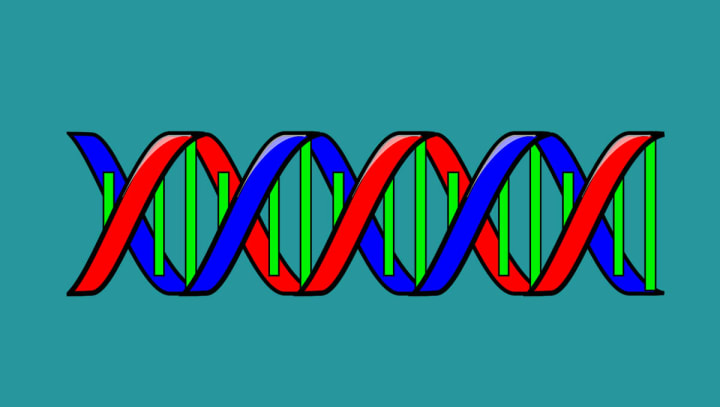An analysis of what are the drug targets for the treatment of systemic lupus erythematosus
Systemic Lupus Erythematosus: Identifying Effective Drug Targets for Management

Systemic lupus erythematosus (SLE) is an autoimmune disease that produces large amounts of immune complexes and autoantibodies and causes damage to the kidneys, skin, joints, and central nervous system. Current SLE treatment is mostly glucocorticoid-led drug therapy, which has more toxic side effects. With the understanding of the pathogenesis of SLE, some targets for the treatment of SLE have emerged, and drugs developed with these targets have achieved some results in preclinical studies and clinical studies. In the future, the development of some biologically targeted therapeutic agents will have an important role in the treatment of SLE.
1. What is Systemic Lupus Erythematosus?
SLE is a complex autoimmune disease that can affect multiple organs, including the skin, joints, heart, kidneys, and brain. Symptoms can vary widely and may include fatigue, joint pain, skin rashes, and fever. The course of the disease is unpredictable, with periods of remission and flares.
2. What Causes Systemic Lupus Erythematosus?
The exact cause of SLE is unknown, but it is thought to involve a combination of genetic and environmental factors. There is evidence to suggest that certain viral infections, hormonal imbalances, and exposure to ultraviolet light may trigger the disease in genetically susceptible individuals.
The pathogenesis of SLE is complex, and B cells, T cells, NK cells, dendritic cells, and related cytokines all play important roles in its pathogenesis. Targeted therapies targeting different aspects of SLE pathogenesis have emerged. So what are the current drug targets for the treatment of SLE?
(1) CD20
B-cell dysfunction is considered to be the most important part of SLE pathogenesis, and CD20 is an antigen consisting of four transmembrane glycoproteins expressed mainly on the surface of normal, abnormally would-be differentiated B cells. CD20 overexpression is one of the hallmarks of abnormal B-lymphocyte activation, and effective inhibition of CD20 expression can reduce the induction of SLE disease by B-lymphocytes to some extent.
Rituximab is a human-mouse chimeric monoclonal antibody against B lymphocyte CD20, which can effectively remove abnormally proliferating B lymphocytes in vivo. Numerous preclinical and clinical studies published in recent years suggest that rituximab targeting CD20 may have great potential in the treatment of SLE. The approved indications for this drug are non-Hodgkin's lymphoma, chronic lymphocytic leukemia, rheumatoid arthritis, granulomatous vasculitis, and microscopic polyangiitis. Rituximab treatment for SLE leads to the improvement of SLE disease. The drug can be used to treat SLE by promoting apoptosis and depletion of B lymphocytes causing a decrease in the patient's autoantibody level and other related indicators and SLE disease activity index.
(2) CD22
CD22 is mainly expressed in most mature B cells and is a co-protein of B cell receptor for B cell-antigen binding reaction, and the lack of CD22 function can lead to the development of autoimmune diseases. CD22 is involved in the pathogenesis of SLE, and the expression level of CD22 in SLE patients is positively correlated with disease activity. Anti-CD22 antibody induces B-cell apoptosis CD22 is an inhibitory receptor on the surface of B cells, while anti-CD22 antibody (epratuzumab) not only inhibits B-cell function but also induces B-cell apoptosis. In an open study, 14 patients with lupus were treated with anti-CD22 antibodies, and the efficacy was associated with B-cell clearance and well tolerated.
(3) BLyS
BAFF, also known as B lymphocyte stimulator (BLyS), which belongs to the tumor necrosis factor ligand superfamily, is a growth factor that promotes the maturation, activation, and survival of B cells and is expressed mainly on the surface of monocytes, macrophages, dendritic cells, and activated T cells. Preclinical animal studies found that mice overexpressing BAFF develop multiple SLE-associated autoantibodies, circulating immune complexes, renal lupus-like pathological changes, and proteinuria; in contrast, anti-BAFF treatment given to SLE model mice delayed the disease course and reduced symptoms. Similar to mice, serum levels of BAFF and APRIL are higher in SLE patients than in the healthy population, and the degree of BAFF and APRIL elevation may correlate with the degree of SLE activity.
Medicilon is a preclinical research outsourcing (CRO) company with many years of accumulated experience in R&D technology and expertise in drug metabolism, pharmacokinetics, pharmacodynamic studies, and toxicology.
Belimumab is a monoclonal antibody drug that binds and inhibits BLyS. Blocking BLyS can cause B-cell self-destruction, causing the body's immune system to stop attacking its tissues. Belimumab reduces the number of abnormal B lymphocytes that cause lupus patients to become sicker. These abnormal B lymphocytes cause the immune system to produce cells that mistakenly attack blood vessels and other healthy tissues in themselves, causing lupus and other immune system diseases. This drug was developed by GlaxoSmithKline and approved by the FDA on March 9, 2011, the first new drug approved for the treatment of SLE in 50 years, and subsequently approved for marketing by the EMA on July 13, 2011.

(4) IL-10
Interleukin IL (IL-10) is a Th2 class cytokine that promotes the proliferation and differentiation of human B cells and is associated with immune phenomena such as T cell and cytokine regulation and antigen production, especially in the regulation of inflammation and autoantibody production. The relationship between autoimmune diseases and IL-10 is more intensively studied in SLE. Recent studies have shown that serum IL-10 levels are significantly elevated in SLE patients compared to healthy individuals, and IL-10 levels are positively correlated with disease severity. Current clinical anti-IL-10 secretory agents for the treatment of SLE are mainly anti-IL-10 monoclonal antibodies and other drugs that have proven effective in small-scale trials. In-depth studies on the role of IL-10 and its related cytokines in the pathogenesis of SLE will hopefully lead to new therapeutic targets.
(5) BTK
Bruton tyrosine kinase (BTK) belongs to the Tec family of non-receptor tyrosine kinases and is a key kinase in the B-cell receptor (BCR) signaling pathway. Abnormal activation of the BCR pathway by high BTK expression affects the proliferation, differentiation, and apoptosis of B cells, leading to various malignant lymphomas, mainly B-cell lymphoma in non-Hodgkin's lymphoma. In addition, abnormal activation of the BCR signaling pathway by high BTK expression can cause B cell dysfunction and altered immune tolerance status, and transform into auto-reactive B cells, which secrete large amounts of autoantibodies to induce autoimmune diseases. One study found that increased expression of Bruton's tyrosine kinase (Btk) in peripheral blood was associated with lupus nephritis, suggesting that it may be a therapeutic target for SLE.
(6) CTLA-4
T-cell-targeted therapy is also showing early results. The antagonist abatacept, which targets cytotoxic T-cell-associated protein 4 (CTLA-4), has shown therapeutic effects in SLE in preclinical animal studies or clinical applications, although its efficacy was not confirmed in phase II and phase III clinical studies. Therefore, the role of CTLA-4 antagonists in the treatment of SLE deserves further exploration. In addition, anti-CD40L monotherapy has also shown better results and is expected to be a novel target drug for the treatment of SLE.
In addition to the above, drug development targets for SLE include CRBN, PKCβ, and interferon-α. For example, cereblon (CRBN) is a protein that widely expresses E3 ligase, which mediates the antiproliferative activity of lenalidomide in myeloma cells and induces cytokine production by T cells.
Although there is a growing number of biologic agents for molecularly targeted therapy of SLE, the results of clinical trials of these agents have been mostly disappointing. Because of the complex pathogenesis of SLE, it is a highly heterogeneous disease with differences in clinical presentation, disease activity, and severity among patients, creating difficulties in developing endpoints for clinical trials, resulting in many clinical trials of biologics failing to meet clinical endpoints. In addition, due to the special nature of biologics, side effects such as serious infections are difficult to avoid during treatment, which is one of the main reasons for the failure of many clinical trials, and future development and trials of biotechnology drugs still need to focus on their safety. Therefore, it is difficult to develop drugs for SLE based on molecular targets, and more research and development efforts are needed in the future.
About the Creator
Enjoyed the story? Support the Creator.
Subscribe for free to receive all their stories in your feed. You could also pledge your support or give them a one-off tip, letting them know you appreciate their work.





Comments
There are no comments for this story
Be the first to respond and start the conversation.